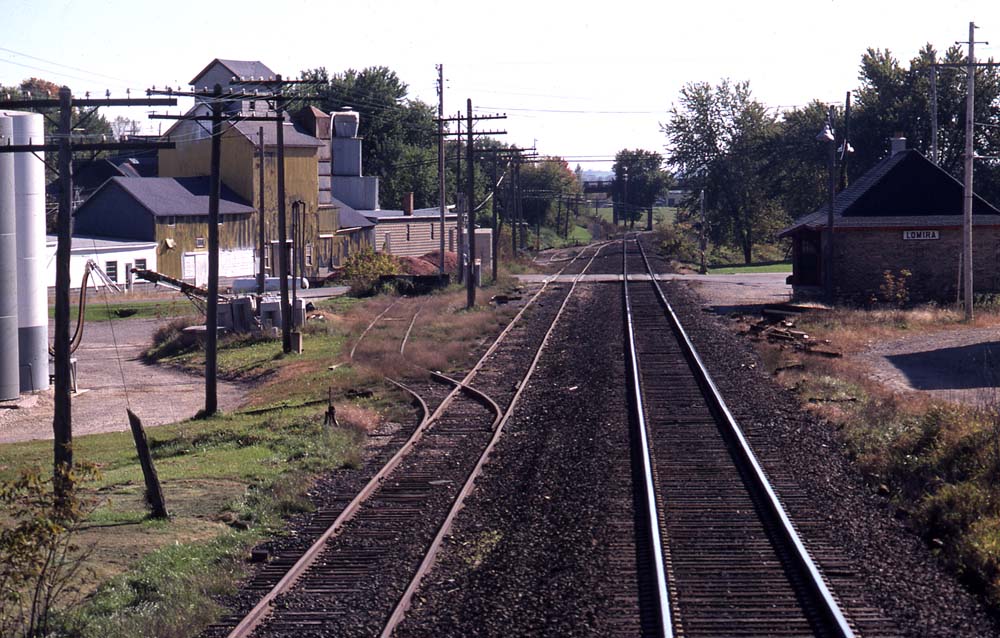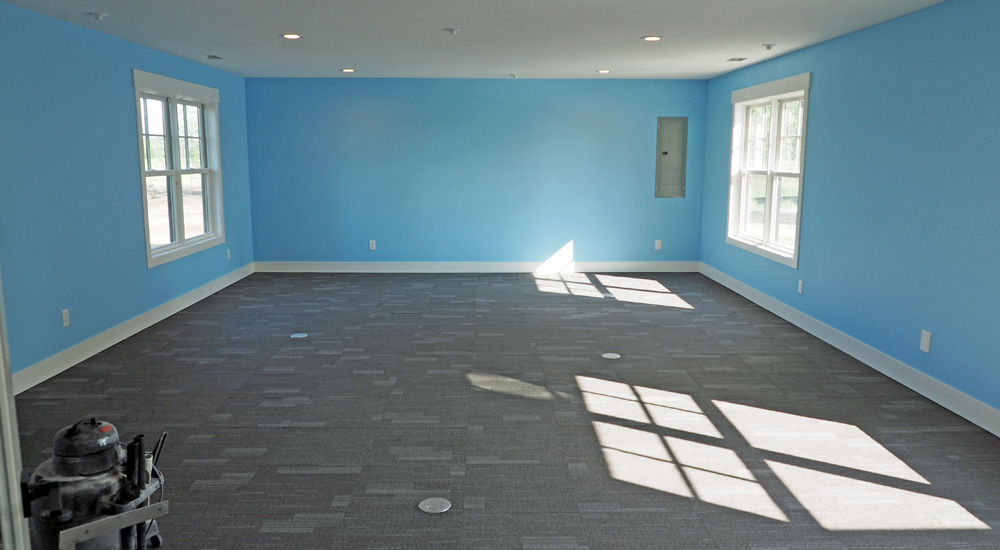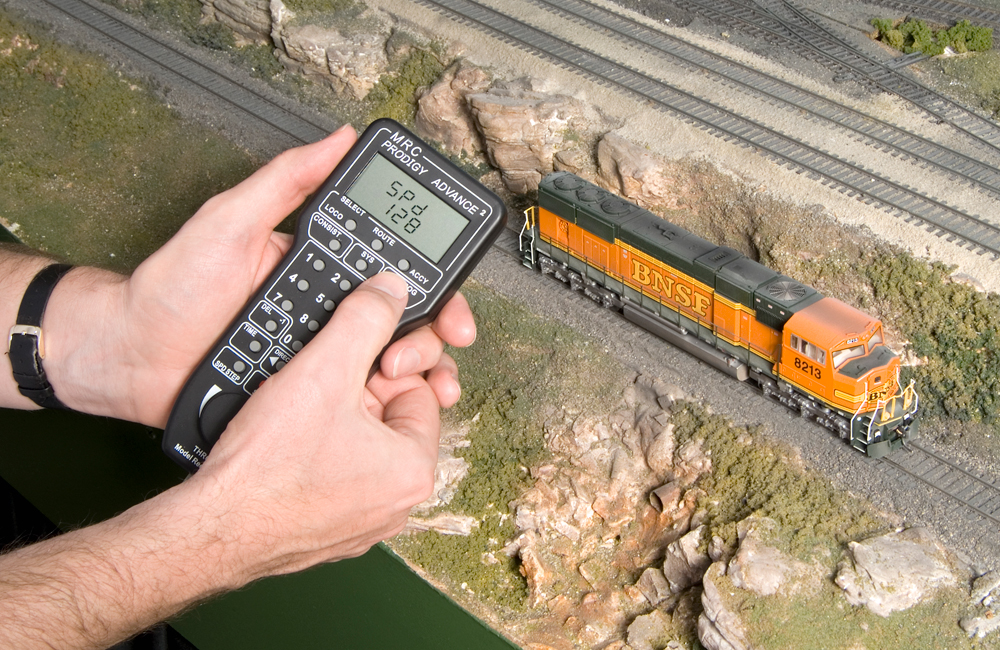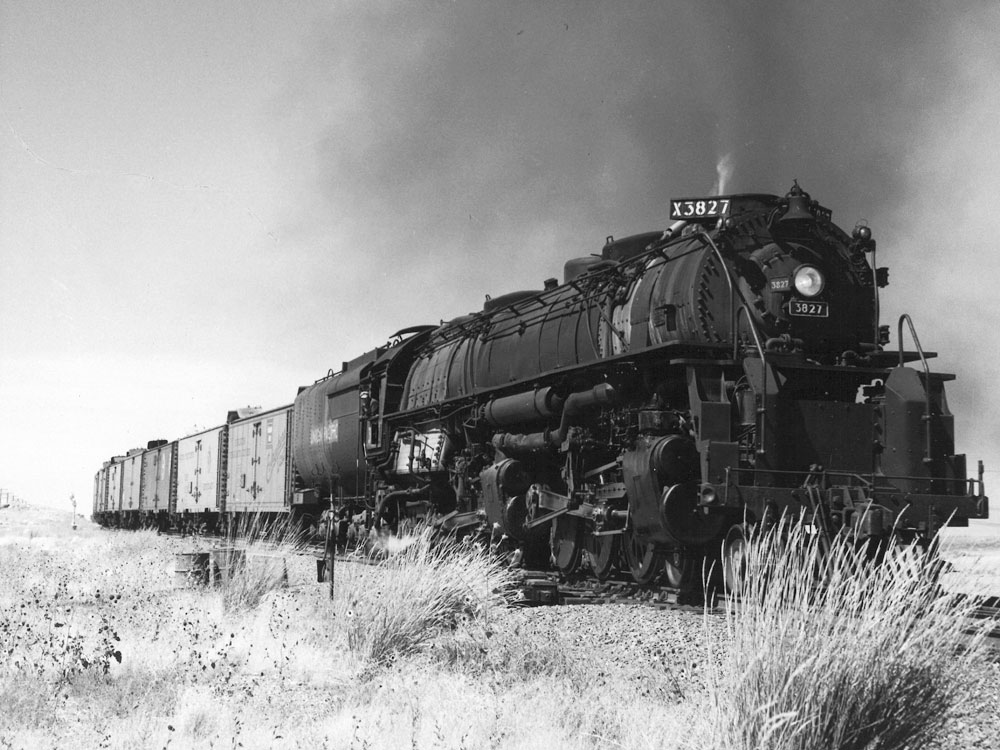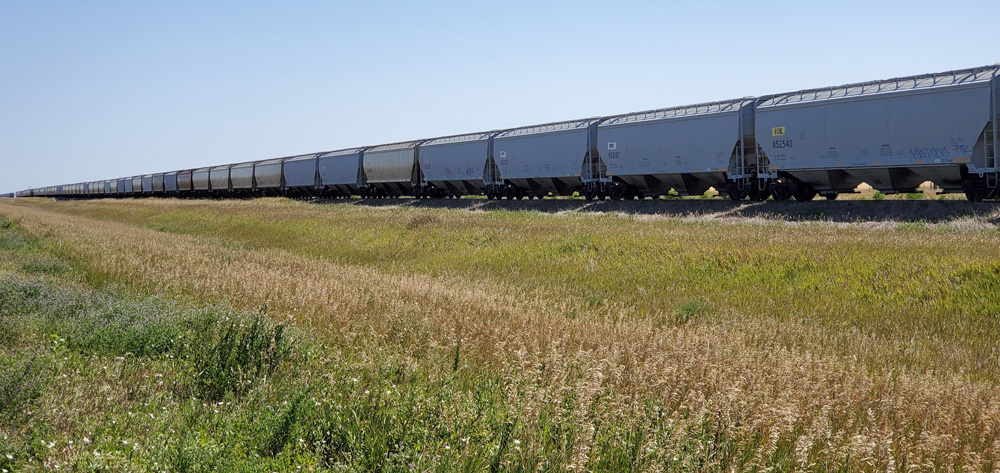
Q: Recently, while driving along a highway in the vicinity of Lindsay, Mont., I came across a long, continuous line of covered hoppers. The photograph I took hardly does it justice. These cars stretched on for the better part of eight miles across the Montana prairie. I’d never seen such a thing before. From what I was able to discern on Google Maps, these cars sat on what seems like a very long siding, although I couldn’t identify any local industry that would service that many freight cars. Would you be able to provide any insight? – R.C. Lopez, Wilmette, Ill.
A: Those cars were likely in storage. During the harvest season on the prairie, railroads need thousands of covered hoppers to promptly handle the grain that needs to move from collector elevators to flour mills, feed mills, export elevators, and other destinations. But in the off season, those cars aren’t needed. Railroads will park idle hopper cars on long passing sidings like the one you saw until they’re needed. This keeps the hoppers ready for use without clogging up train yards. Another possible explanation is the cars are parked there to form a windbreak. Though the cars’ location on a flat, windswept prairie makes this possible, the fact that the cars are covered hoppers and look fairly well kept make it less likely than the first explanation.
Q: I’m a 12-year-old modeler in a rather difficult situation. My Bachmann 4-4-0 had a silver, gold, and red livery. I repainted it with acrylic paints in an effort to make it look more like the prototype. Not being a master artist, I didn’t make clean, sharp lines, and now I regret my decision. How would I remove the acrylic without damaging the original paint? – Gabriel Henry, Summerville, Ga.
A: You’re in a tough spot, Gabriel, because your only hope is that the underlying factory-applied paint is more durable than yours. Remove the body shell from the mechanism and soak the shell for a few minutes (no more than 5 to start with) in Windex or a similar window cleaner. Then take a soft toothbrush to the paint. Brush gently, and if your paint doesn’t come off, soak it a while longer. If your brushing starts to take off the underlying paint, too, stop brushing, rinse off the shell with distilled water, and let it sit for a few days for the paint to re-harden. Then try again, soaking in the window cleaner for less time. If window cleaner doesn’t soften the paint, you might try something stronger, like Pine-Sol. But Pine-Sol can take off factory-applied paint, too, so this should be a last resort. Soak for only a few minutes at a time in between taking it out and brushing gently to test it. You may still end up with a locomotive shell in need of a complete repainting. But that’s what you wanted in the first place, isn’t it? Good luck!
Q: A few years ago (no longer than 10 years ago), I read an article on making trees from the goldenrod plant. I cut that article out and saved it in in a file folder, but now I can’t find it. Perhaps it was written by David Popp. Is it possible that you could find this article? – Bob Zalme, Lexington, Ky.
A: Though it wasn’t written by David Popp, “Clip and dip goldenrod trees” by Ron Stacy is probably the article you’re thinking of. It was published in our September 2014 issue. If that issue isn’t in your back-issue stash, you can read it online.
Q: I was at a train show where I saw a Virginian Railway battleship gondola and couldn’t help but wonder if one was ever used in service to carry a commodity other than coal, such as crates or even scrap metal. – Robert Perez, Charleston, W.Va.
A: Coal gondolas can be as large as they are because coal is, relatively speaking, not very dense compared to other ladings like gravel, ore, or sand. About the only other loose lading light enough to be carried in a coal gon is wood chips. But then, there’s a saying in model railroading – “there’s a prototype for everything.” If you wanted to put some other low-density cargo in your battleship gon, like crates, who’s going to tell you you’re wrong? It’s your railroad.
Reader Tip: Modeling airports
I’ve met a number of modelers who wanted to include an airport on their layouts but couldn’t find appropriate plane models or make even a shortened runway fit. I have a solution. Represent the runway with a painting or photo that recedes into the backdrop, so only the apron of the runway appears on the layout. Airplane models in a wide variety of eras and modeling scales can now be found on Shapeways, the 3-D printing website. – Mike Skinner, Palm City, Fla.
Send us your questions
Do you have a question about model railroading you’d like to see answered in Ask MR? Send it to associate editor Steven Otte at AskMR@MRmag.com






